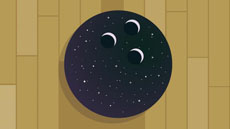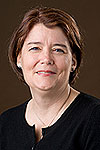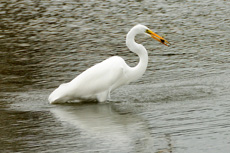Have a safe day!
Wednesday, Oct. 24
2 p.m.
LHC Physics Center Topic of the Week Seminar - WH11NE
Speaker: Ted Liu, Fermilab
Title: Trigger Challenges at High-Luminosity LHC: The View from Technology
3:30 p.m.
DIRECTOR'S COFFEE BREAK - 2nd Flr X-Over
4 p.m.
Fermilab Colloquium - One West
Speaker: Juan Jose Gomez-Cadenas, University of Valencia
Title: Ettore Majorana Through the Looking-Glass
Thursday, Oct. 25
12:30 p.m.
Physics for Everyone - Auditorium
Speaker: Don Lincoln, Fermilab
Title: Relativity at the Energy Frontier
1:15 p.m.
Theoretical Physics Seminar (NOTE TIME and LOCATION) - WH3NW
Speaker: Jessie Shelton, Harvard University
Title: Asymmetric (S)tops
3:30 p.m.
DIRECTOR'S COFFEE BREAK -
2nd Flr X-Over
THERE WILL BE NO ACCELERATOR PHYSICS AND TECHNOLOGY SEMINAR TODAY
Click here for NALCAL,
a weekly calendar with links to additional information.
Ongoing and upcoming conferences at Fermilab
|
|
Wednesday, Oct. 24
- Breakfast: breakfast casserole
- Old El Paso lime chicken
- Chicken cordon blue sandwich
- Traditional turkey dinner
- Smart cuisine: beef bourguignon
- Turkey bacon Swiss panini
- Meat lover's calzone
- Blackened chicken Alfredo
Wilson Hall Cafe Menu |
|
Wednesday, Oct. 24
Lunch
- Rouladen
- Egg noodles with dill
- Glazed carrots
- Apple walnut cake
Friday, Oct. 26
Dinner
Closed
Chez Leon Menu
Call x3524 to make your reservation.
|
|
Dark Energy Camera all-hands celebration - Oct. 30
Everyone is invited to attend an all-hands celebration on Tuesday, Oct. 30, at 9:30 a.m. in Ramsey Auditorium. Learn about the world's most powerful digital camera, which began capturing and recording images in September.
Fermilab scientist and project manager Brenna Flaugher will lead a non-technical briefing from 9:30 a.m. to 9:45 a.m. and a 15-minute question-and-answer session from 9:45 a.m. to 10 a.m. Following the all-hands meeting, coffee and bagels will be provided in the Wilson Hall cafeteria. Fermilab scientists will be present to answer questions about the Dark Energy Camera.
Managers and supervisors: If at all possible, please encourage your staff to attend.
|
Explain it in 60 seconds: gravitational waves
 |
If you could detect a bowling ball's gravitational waves, you would know when someone threw the ball—even if you were standing outside the bowling alley. Image: Sandbox Studio, Chicago
|
Gravitational waves were first predicted by Albert Einstein almost a century ago, but scientists have yet to observe them directly.
According to Einstein, anything with mass exerts a gravitational pull on everything around it. When an object moves, this gravitational pull changes. If you could detect the gravitational tug from a bowling ball, you would know when someone threw the ball, even if you were standing outside the bowling alley. The pull would grow stronger or weaker as the ball traveled closer to or farther from you. You wouldn't know about the ball's motion instantaneously, though, since nothing—not even information—can travel faster than the speed of light. News of the ball's acceleration would be carried through ripples in spacetime called gravitational waves.
However, most gravitational waves are extraordinarily weak. In order to emit strong gravitational waves, an object would need to be massive and to accelerate very quickly. You would be more likely to feel gravitational waves outside the bowling alley if the bowling ball were as dense as a black hole, and if someone bowled it at close to the speed of light.
Scientists are building facilities such as the Laser Interferometer Gravitational-wave Observatory, or LIGO, to directly measure gravitational waves. Within a decade we expect to detect waves from black holes as massive as our sun spiraling into one another at distances of hundreds of millions of light-years from Earth. The detection of these gravitational waves will open a revolutionary new window on our universe.
—Daniel Holz, University of Chicago
Read similar explanations in the symmetry archive
|
Rockefeller University
NAME:
The Rockefeller University
HOME TOWN:
New York, NY
COLORS:
Blue and gold
COLLABORATING AT FERMILAB SINCE:
1971
WORLDWIDE PARTICLE PHYSICS COLLABORATIONS:
CDF, CMS
NUMBER OF SCIENTISTS AND STUDENTS INVOLVED:
Seven scientists
PARTICLE PHYSICS RESEARCH FOCUS:
We concentrate in three physics areas: (1) experimental studies of SUSY, dark matter and QCD processes, (2) diffraction physics and (3) development of statistical techniques for use in high-energy physics. In diffraction, we have implemented the MBR (Minimum Bias Rockefeller) phenomenology for diffractive processes in PYTHIA8 for event simulations in CDF and CMS.
WHAT SETS PARTICLE PHYSICS AT THE ROCKEFELLER UNIVERSITY APART?
Located in vibrant Manhattan, The Rockefeller is a graduate university with a long tradition of excellence in particle physics. We devote our time to research, working one-on-one with graduate students and with high-school students through the university's strong science outreach program. Our faculty and research members may work at Fermilab or CERN at any time of the year, enhancing interaction with colleagues from CDF and CMS.
FUNDING AGENCIES:
DOE
View all university profiles.
|
Federal budget limits affect scientific conferences
From The New York Times, Oct. 23, 2012
After General Services Administration workers were found splurging on hotels, food and catering for a regional conference near Las Vegas two years ago, the Obama administration imposed new guidelines that limit the amount of money that federal agencies can spend on such events. The Office of Management and Budget estimates that the directive saved more than $600 million in the first two quarters of this fiscal year, compared with the same period in 2010.
But a number of science and technology organizations are now arguing that the federal belt-tightening is affecting the ability of the scientific community to share research and collaborate.
Read more
|
State-of-the-art beams from table-top accelerators
From Berkeley Lab News Center, Oct. 22, 2012
The rapidly evolving technology of laser plasma accelerators (LPAs) – called "table-top accelerators" because their length can be measured in centimeters instead of kilometers – promises a new breed of machines, far less expensive and with far less impact on the land and the environment than today's conventional accelerators.
Read more
|
|
Upgrades to the CMS detector
 |
|
Patricia McBride
|
Patricia McBride, head of the CMS Center, wrote this column.
The CMS detector will complete its nine-month run at a collision energy of 8 TeV soon, and the members of the CMS collaboration are already preparing for future runs at higher energies. Starting in the spring, there will be a long shutdown of the LHC for upgrades to its accelerator components. At the same time, we will make some improvements to the CMS detector. In late 2014, the LHC will start up again with energies close to 14 TeV.
We anticipate the LHC peak luminosity could reach ~2 x 1034 cm-2s-1, which would more than double the rate of proton-proton collisions that the LHC produces now. The CMS collaboration has planned upgrades to the CMS detector to match the anticipated flood of collisions. The upgrades include a new pixel detector, new photo detectors, improved data readout for the full barrel and endcap hadron calorimeters and an upgrade to the level-1 trigger system. Jeff Spalding from Fermilab is the co-coordinator for the CMS upgrade program at CERN.
The CMS collaboration recently released Technical Design Reports for the new pixel detector and the upgrades for the hadron calorimeters. These documents received favorable reviews from the LHC Committee at CERN at its meeting in September.
The U.S. Department of Energy gave first stage approval (CD-0) in September for the plans for U.S. participation in the upgrade program for the CMS and ATLAS detectors. The next step in the DOE approval process will come in spring 2013 and will require the CMS and ATLAS collaborations to provide details about the budget and schedule for the U.S. contributions to the upgrade project. The collaborations will submit to the National Science Foundation a proposal for the upgrade project at the end of this calendar year.
The US CMS collaboration proposes to take on a significant role in the CMS upgrade project. Fermilab scientists and engineers are working with university teams from around the world to develop the plans. We look forward to the challenge of constructing and commissioning the upgrades for the CMS detector. Installation must be completed by the end of the second long shutdown of the LHC, which is currently scheduled for 2018, following several years of running at 14 TeV. In addition to the work on the detector, Fermilab and US CMS will continue their leading roles in preparing the CMS software framework and computing infrastructure for the future demands of LHC data collection and processing.
|
Egret goes fishing
 |
An egret captures a fish in the eastern pond in front of Wilson Hall. Photo: Steve Werkema, AD |
|
"Playing with Time" - Nov. 7
The University of Chicago Joint Speaker Series features the panel discussion "Playing with Time," which will take place on Wednesday, Nov. 7, at 6:30 p.m. at The Field Museum. Fermilab's Joe Lykken will be one of the panelists and will be joined by scientists from the University of Chicago and Argonne National Laboratory.
Registration is required. The deadline for registration is Oct. 31. Visit the event's RSVP Web page for more information and to register.
|
Enrollment for 2013 benefits
All employees should have received their 2013 benefits information packets via interoffice mail. This is an active enrollment, which means that even if you intend to continue with the same plans and coverage that you have this year, you must re-enroll. If you do not re-enroll, your coverage will be suspended on Dec. 31, 2012. Periodic active enrollments are necessary to ensure that beneficiaries and dependents are up-to-date.
More information is available in the Oct. 16 issue of Fermilab Today. |
ES&H weekly report, Oct. 23
This week's safety report, compiled by the Fermilab ES&H section, contains one incident.
An employee suffered a hematoma to his finger while moving a magnet. He received first-aid treatment.
Find the full report here. |
|